There’s real power in walking in circles. If you have any doubt, walk a labyrinth. Or do as we did, and head to the San Francisco Museum of Modern Art (SFMoMA) and walk the Richard Serra sculpture, Sequence (on view until January 9, 2019). Its part of the free public access area of the museum, so this is another one of life’s great free luxuries. We promise, you’ll be moved.
A visit to the San Francisco Museum of Modern Art (SFMoMA)
On a recent trip to the Bay Area, we found ourselves with a precious 90 minutes to go exploring. We had never visited the SFMOMA, so we decided to go and check it out. What a great decision that turned out to be! It holds many wonders, not the least of which is the sculpture Sequence, 2006, by American sculptor Richard Serra.
[white_box]Join our community
For access to insider ideas and information on the world of luxury, sign up for our Dandelion Chandelier newsletter. And see luxury in a new light.
sign up now >
[/white_box]
A native of San Francisco, Richard Serra grew up visiting the Marine shipyards where his father worked as a pipe fitter. He has written about the formative experience of watching the launching of the huge steel tankers. Sequence is formed from weatherproof steel.
It’s tucked away on the lowest level of the museum, and even on a really busy late afternoon, it was completely deserted when we descended the stairs to see what it was all about.
Drawn into Richard Serra’s sculpture Sequence
We didn’t initially intend to actually walk through this massive hulking work. But as we circled the deep rust-colored perimeter, an opening presented itself, and the magnetic pull was just too strong. It was like the wardrobe door in The Lion, the Witch and the Wardrobe.
So we stepped in.
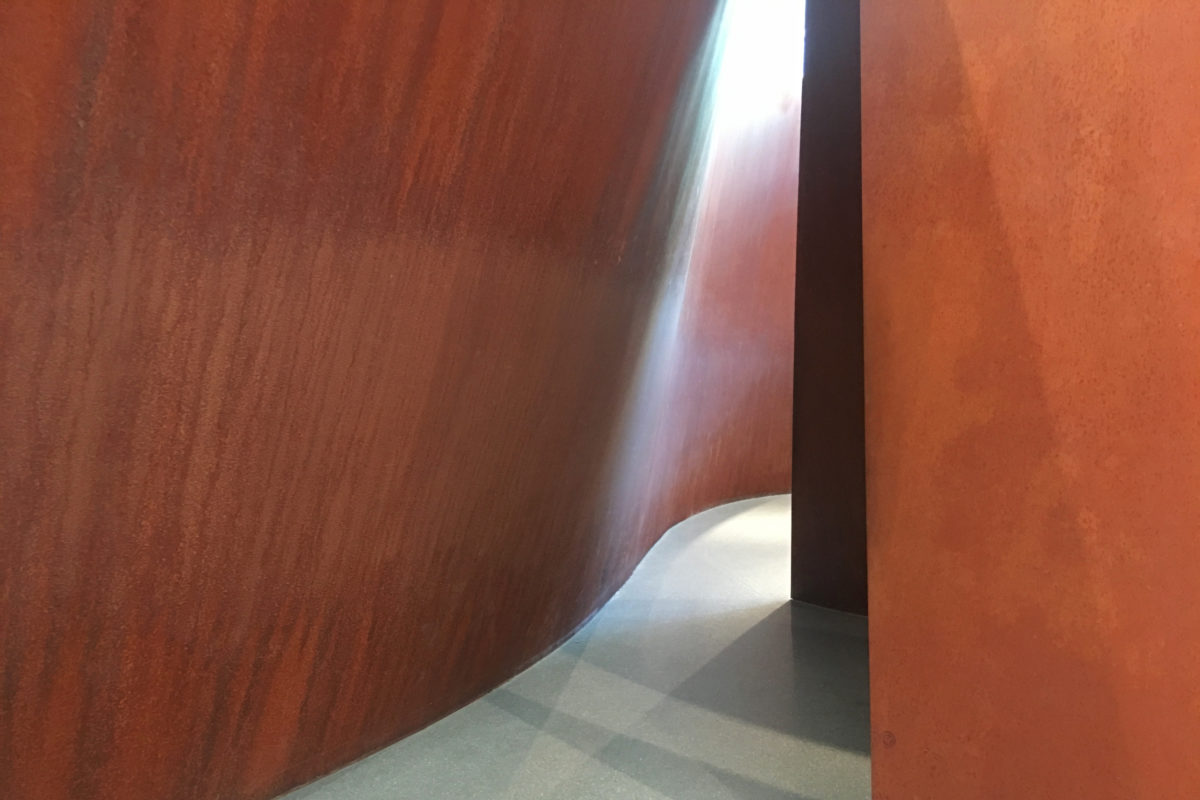
Sequence, 2006, Richard Serra sculpture at the San Francisco Museum of Modern Art (SFMoMA). Photo Credit: Dandelion Chandelier.
People have many different reactions to Serra. It is said that his works are meant to mimic a walk in a majestic canyon or a trail through a gorge. Perhaps its because we were in the middle of a bustling metropolis, but our initial experience of the work was being in the canyons of lower Manhattan. Sheer walls towered over us, there were shafts of light but also deep shadows. It felt almost overwhelming, alien, lonely and slightly sinister.
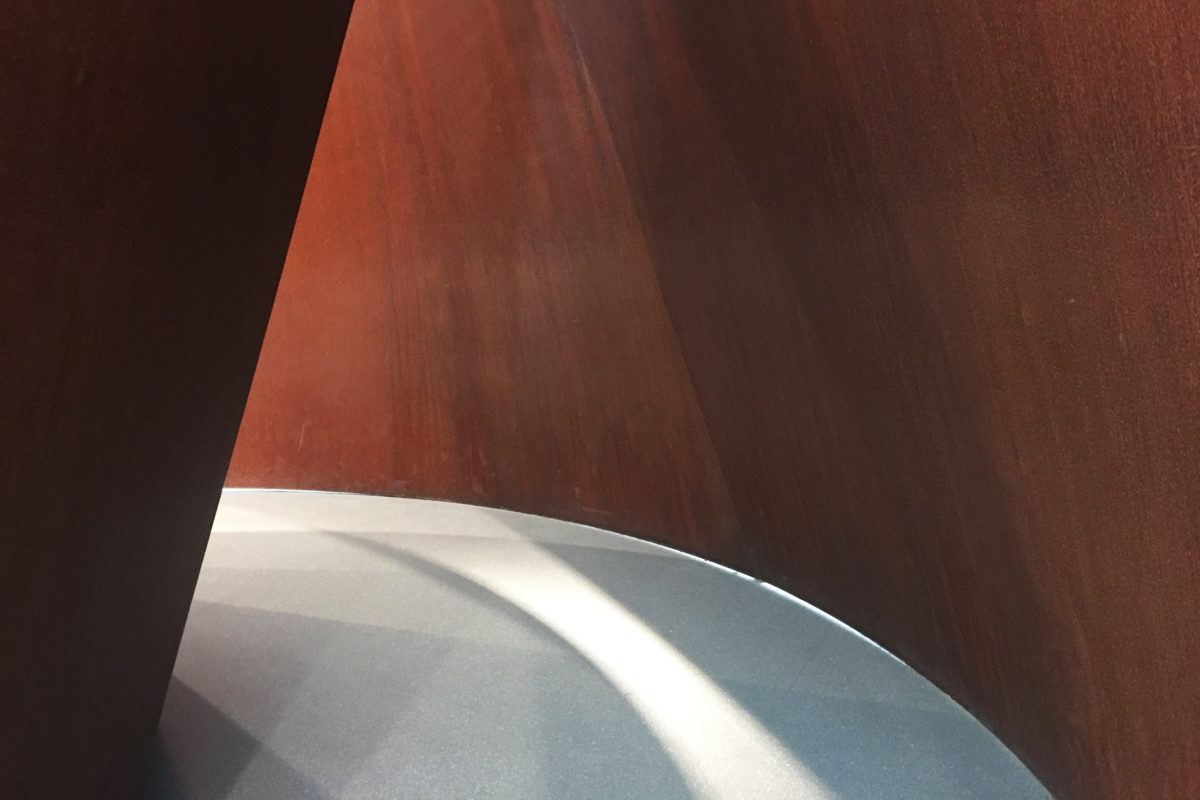
Sequence, 2006, Richard Serra sculpture at the San Francisco Museum of Modern Art (SFMoMA). Photo Credit: Dandelion Chandelier.
Then we got lost.
It hadn’t actually occurred to us when we entered that we wouldn’t be able to just leave at will. It dawned on us that we were basically captive to this sculpture, and had temporarily suspended our free will. There were only two options for getting out and regaining our freedom: keep going, or double back.
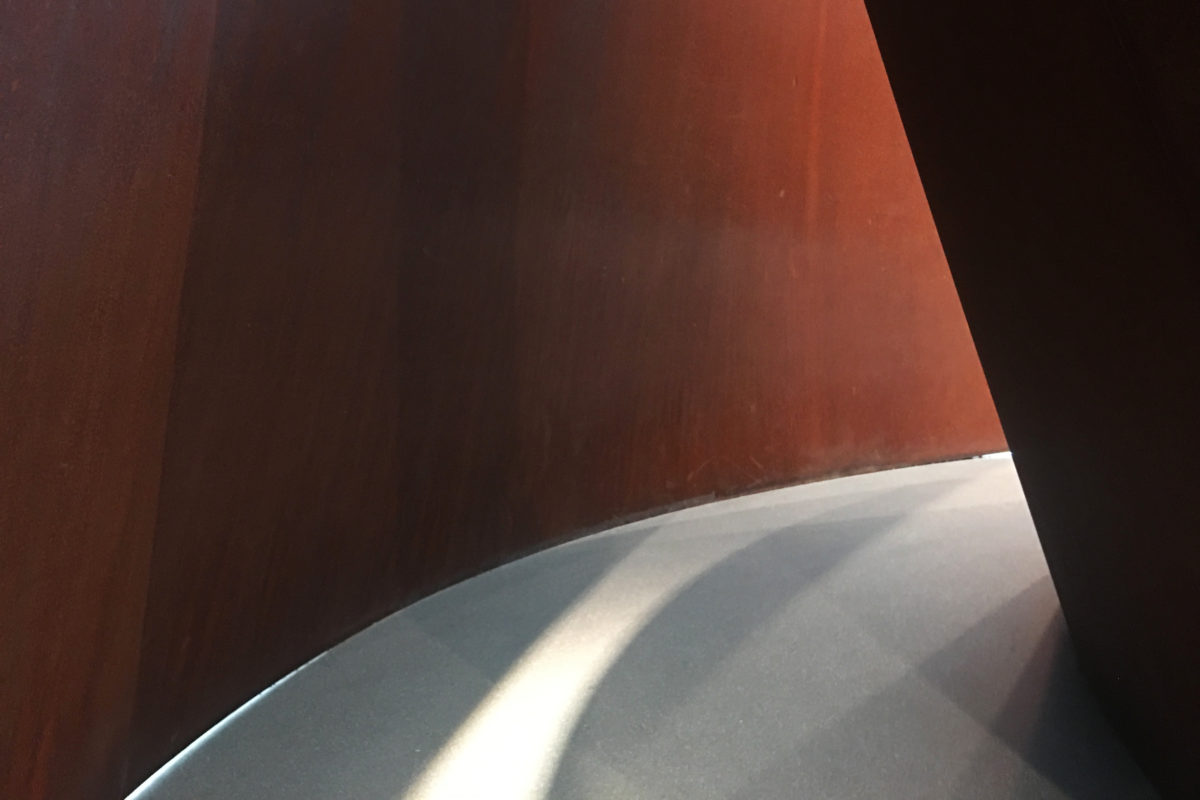
Sequence, 2006, Richard Serra sculpture at the San Francisco Museum of Modern Art (SFMoMA). Photo Credit: Dandelion Chandelier.
That made us think about why we felt afraid to be lost in this spiral. Was it a maze, designed to trick and challenge us? Was there an endpoint that we were meant to find? Or was it a labyrinth? A circular path meant to foster spiritual growth?
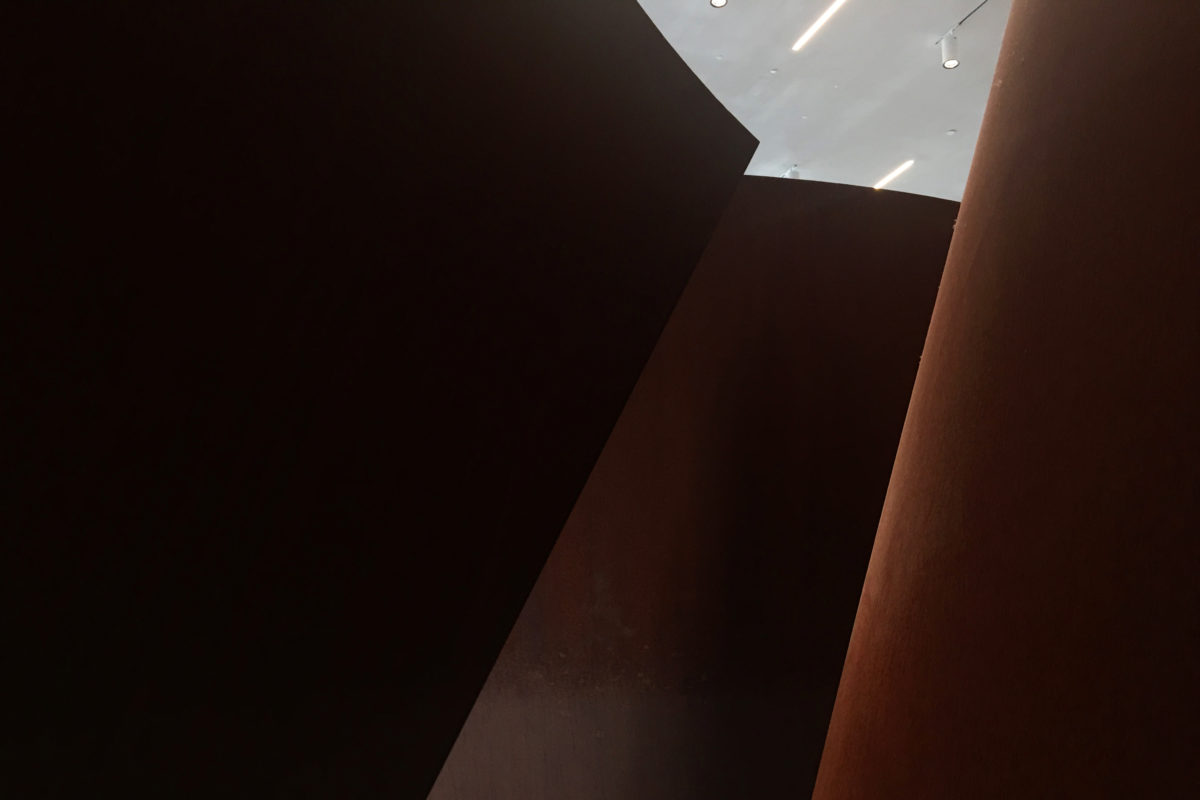
Sequence, 2006, Richard Serra at the San Francisco Museum of Modern Art (SFMoMA). Photo Credit: Dandelion Chandelier.
going in circles
That led us to start thinking about the nature of life, and fate, and agency. As in real life, we had made some choices, and now we needed to make more. We could fight the flow, or just go with it. Try to reclaim the past, or stride purposefully into the future. We could focus on the light or on the shadows. Or take note of both.
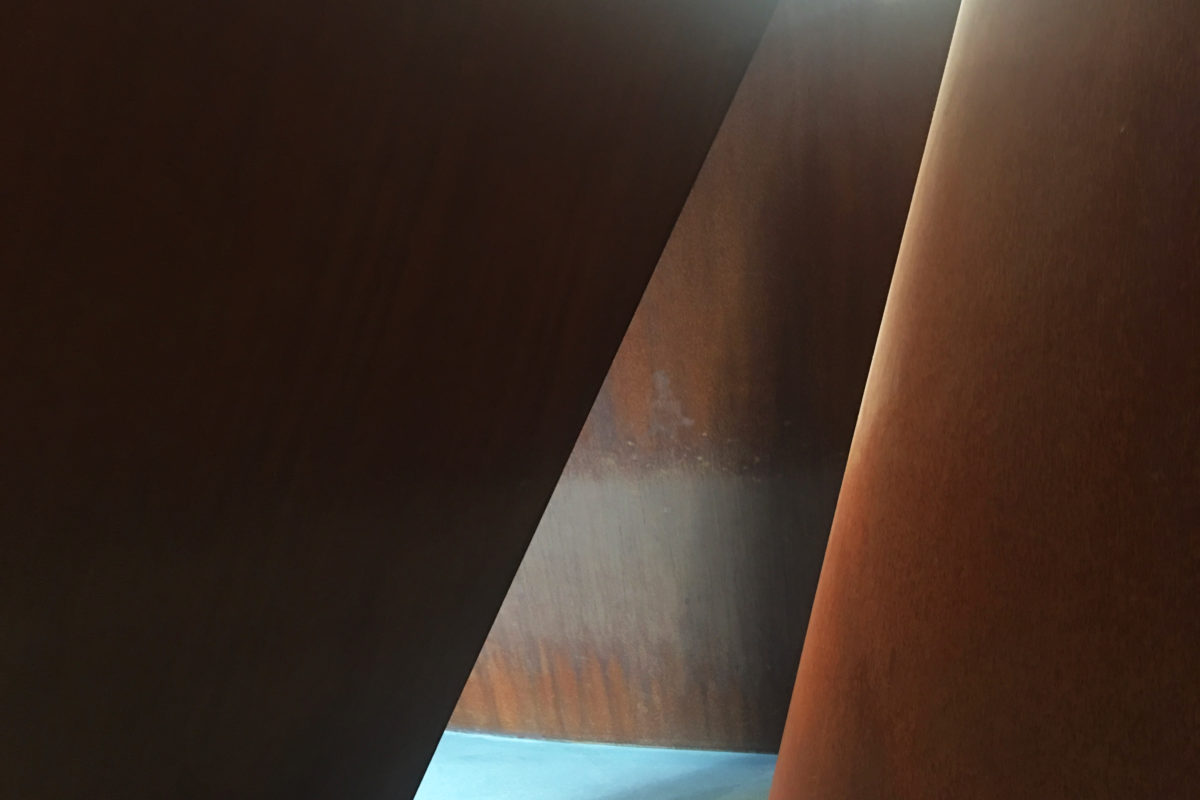
Sequence, 2006, Richard Serra at the San Francisco Museum of Modern Art (SFMoMA). Photo Credit: Dandelion Chandelier.
It reminded us in a deep visceral way of what it felt like to walk a labyrinth: walking in a circle in deep thought. Being in a calm, meditative space that caused us to notice and remember certain things.
As kids, we were told “stop going around in circles” when we were confronted with a problem. The point was that linear, clear thinking was what was required to solve a problem, or to advance the cause.
But actually, now that we’re older, we’ve come to realize that walking in a circle is a highly effective technique for solving problems, and for seeing things more clearly.
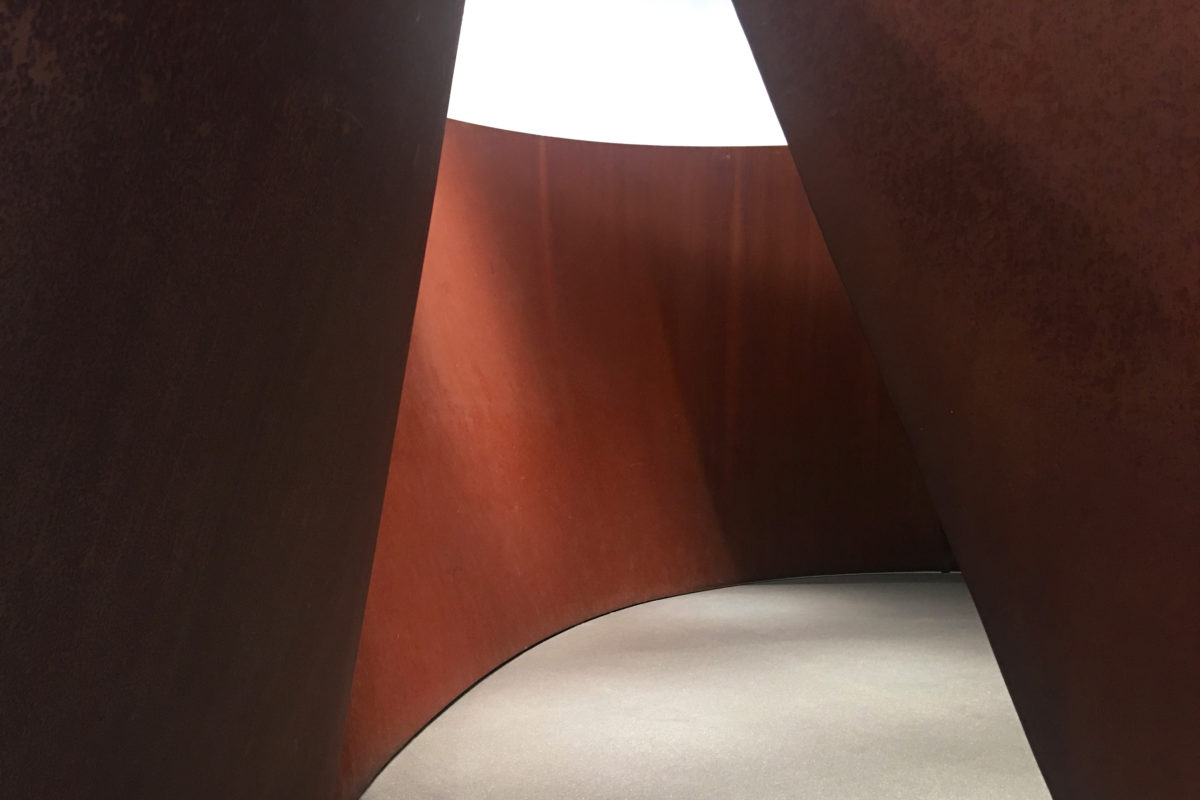
Sequence, 2006, Richard Serra at the San Francisco Museum of Modern Art Photo Credit: Dandelion Chandelier
the power of Serra’s sculpture Sequence
Our time in the spiral that Serra created left us feeling calmer, and more connected, and with more clarity of purpose.
How odd and surprising to feel something so spiritual and personal in a huge steel sculpture in the middle of a sprawling metropolis.
This is why museums matter. Great art can stun and surprise, in the strangest ways, if we slow down just enough to let it happen.
Oh, and we did find our way out. But we were kind of sorry to leave.
join our community
For access to insider ideas and information on the world of luxury, sign up for our Dandelion Chandelier newsletter here. And see luxury in a new light.







